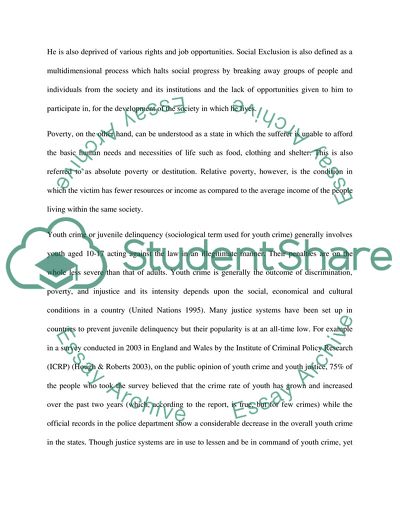Cite this document
(Policies in Reducing the Process of Social Exclusion Essay, n.d.)
Policies in Reducing the Process of Social Exclusion Essay. Retrieved from https://studentshare.org/sociology/1733033-critically-examine-the-suggested-links-between-youth-crime-social-exclusion-and-poverty-1970-2009
Policies in Reducing the Process of Social Exclusion Essay. Retrieved from https://studentshare.org/sociology/1733033-critically-examine-the-suggested-links-between-youth-crime-social-exclusion-and-poverty-1970-2009
(Policies in Reducing the Process of Social Exclusion Essay)
Policies in Reducing the Process of Social Exclusion Essay. https://studentshare.org/sociology/1733033-critically-examine-the-suggested-links-between-youth-crime-social-exclusion-and-poverty-1970-2009.
Policies in Reducing the Process of Social Exclusion Essay. https://studentshare.org/sociology/1733033-critically-examine-the-suggested-links-between-youth-crime-social-exclusion-and-poverty-1970-2009.
“Policies in Reducing the Process of Social Exclusion Essay”, n.d. https://studentshare.org/sociology/1733033-critically-examine-the-suggested-links-between-youth-crime-social-exclusion-and-poverty-1970-2009.


